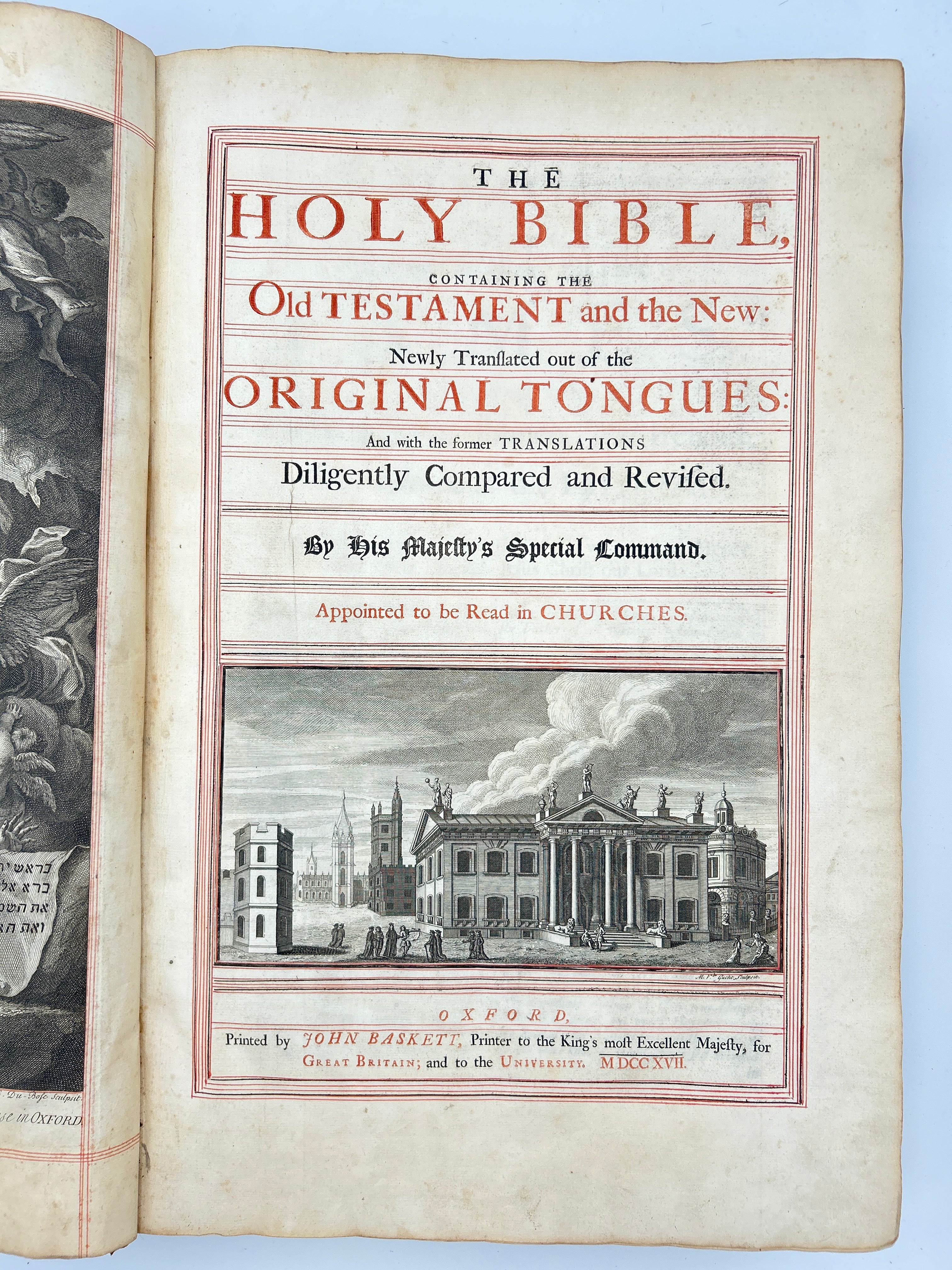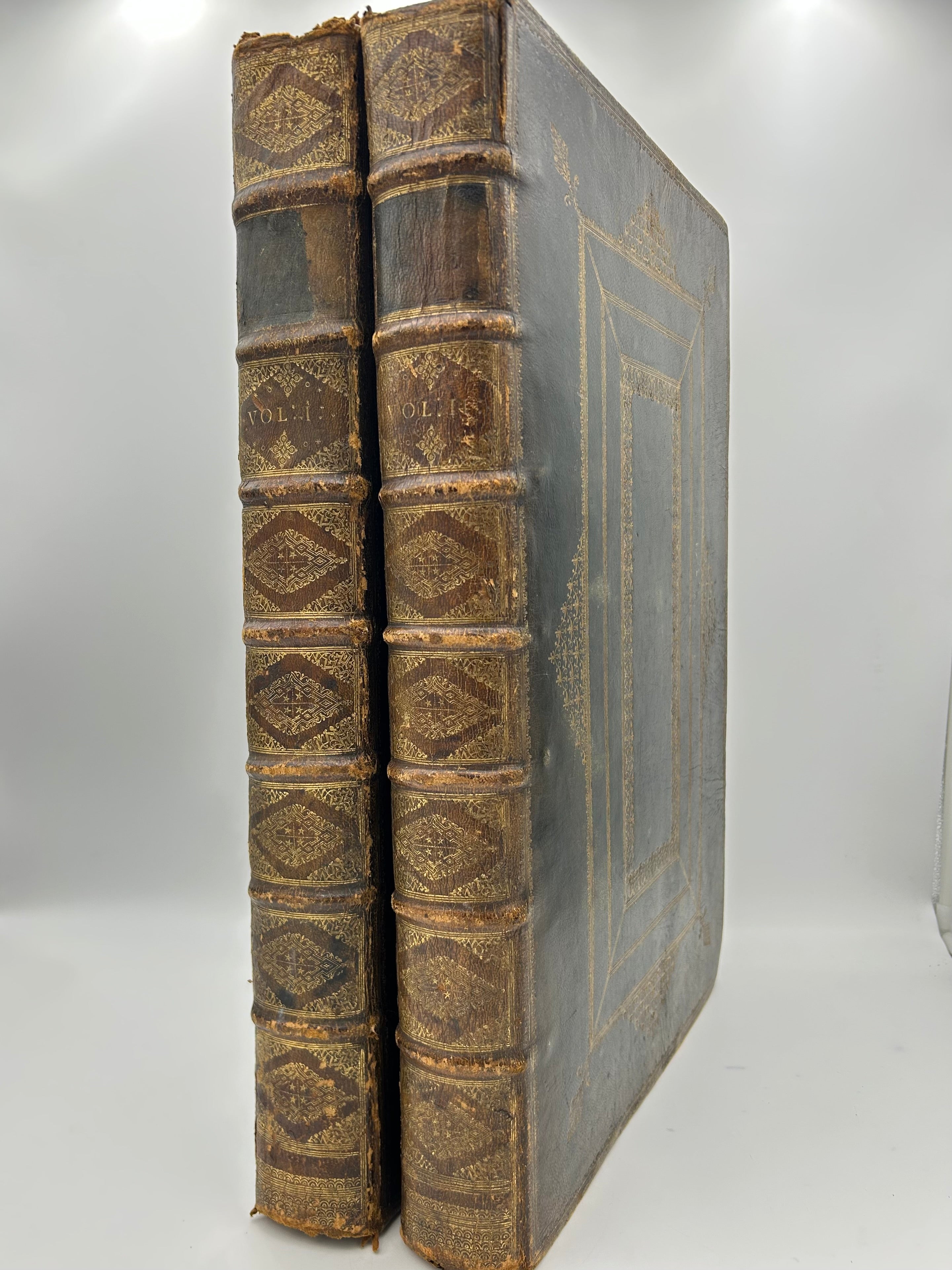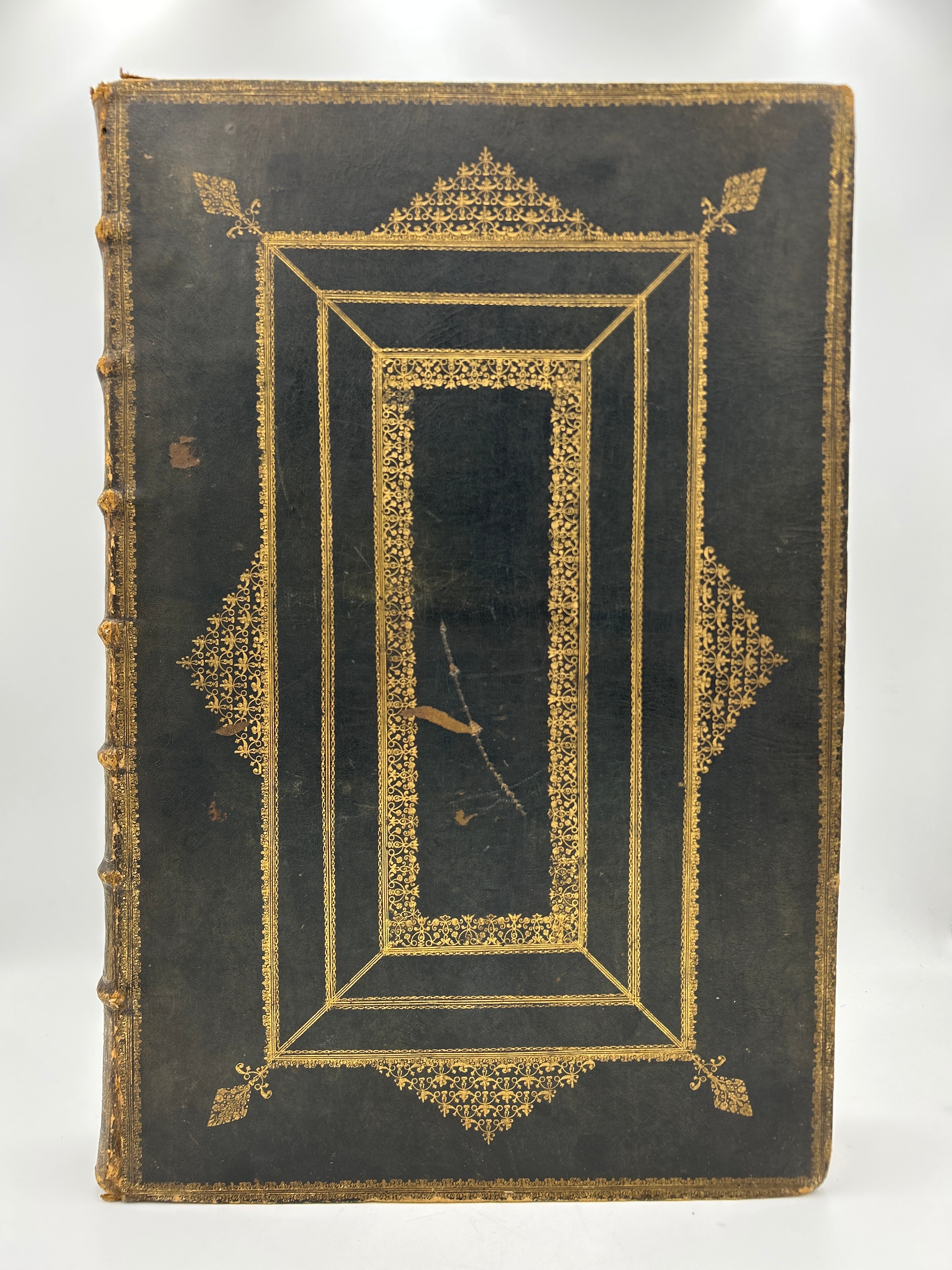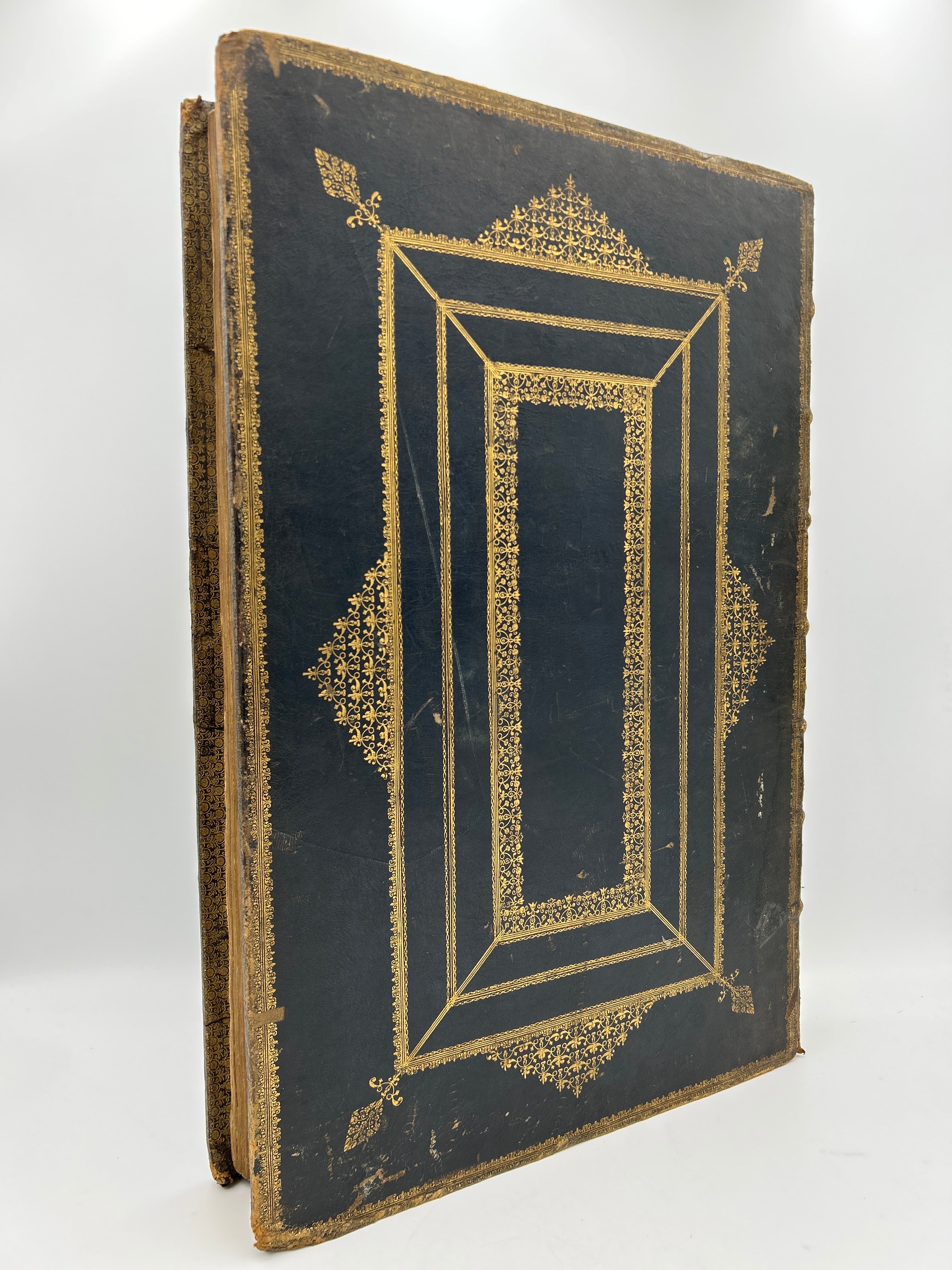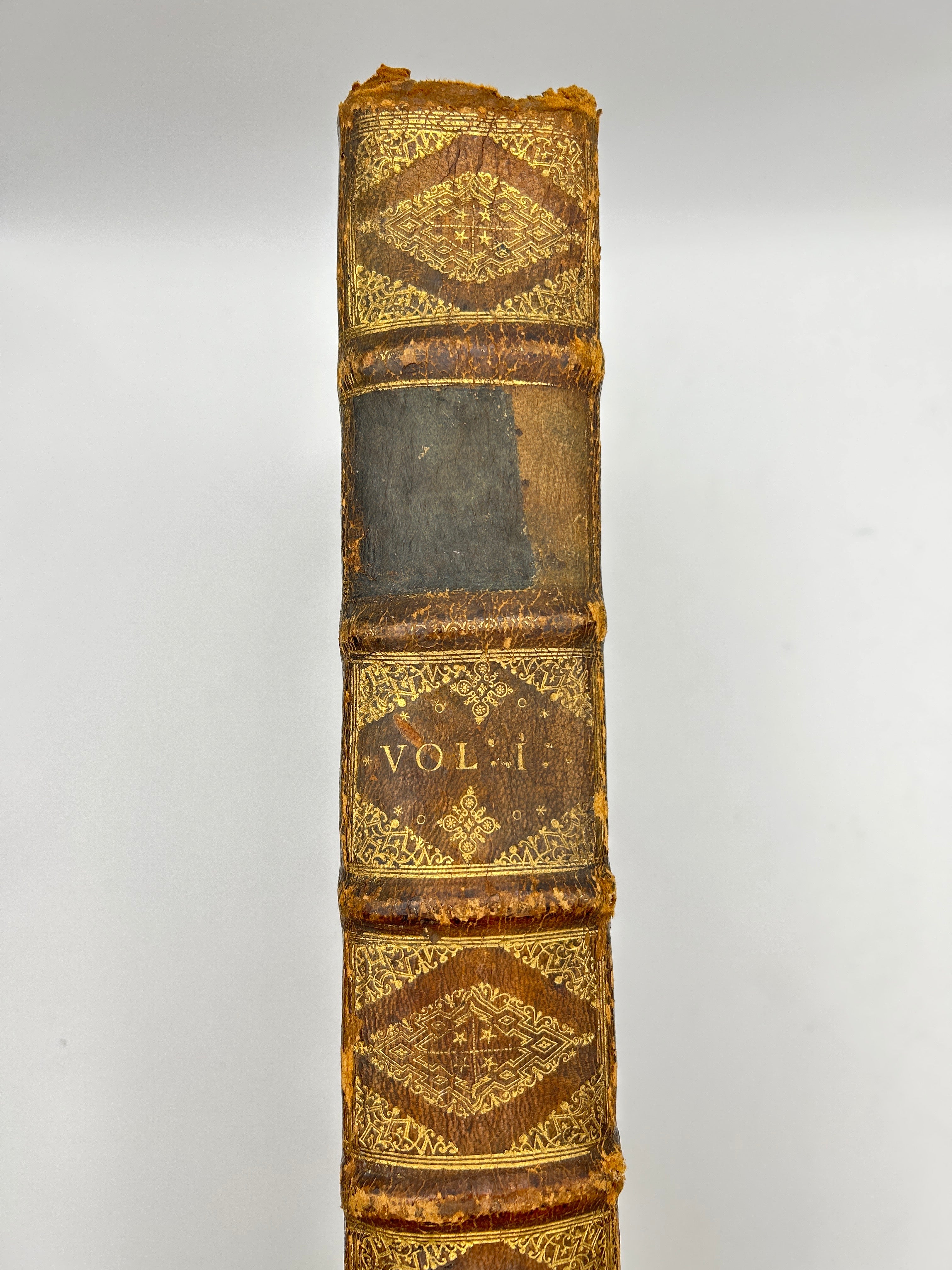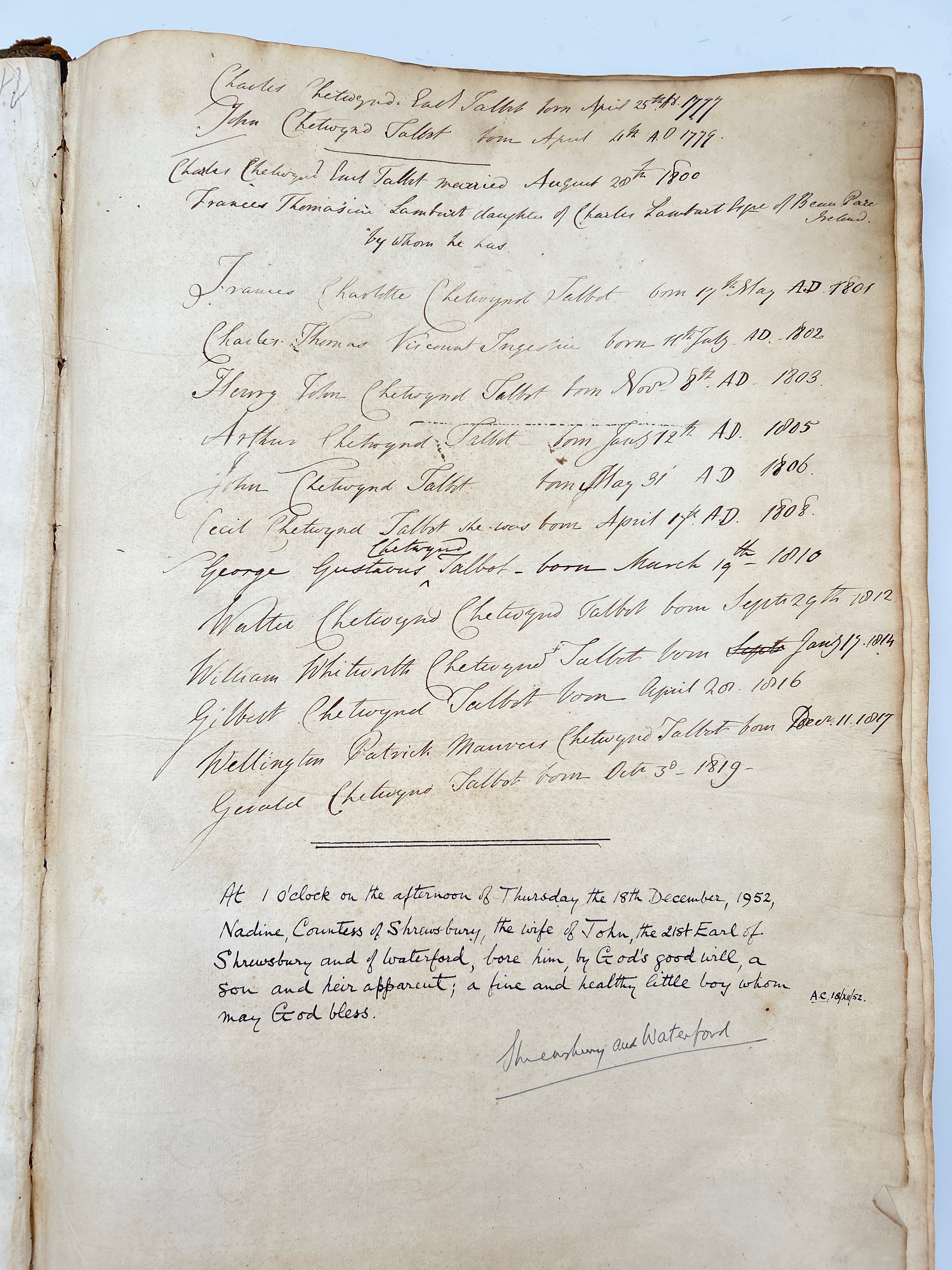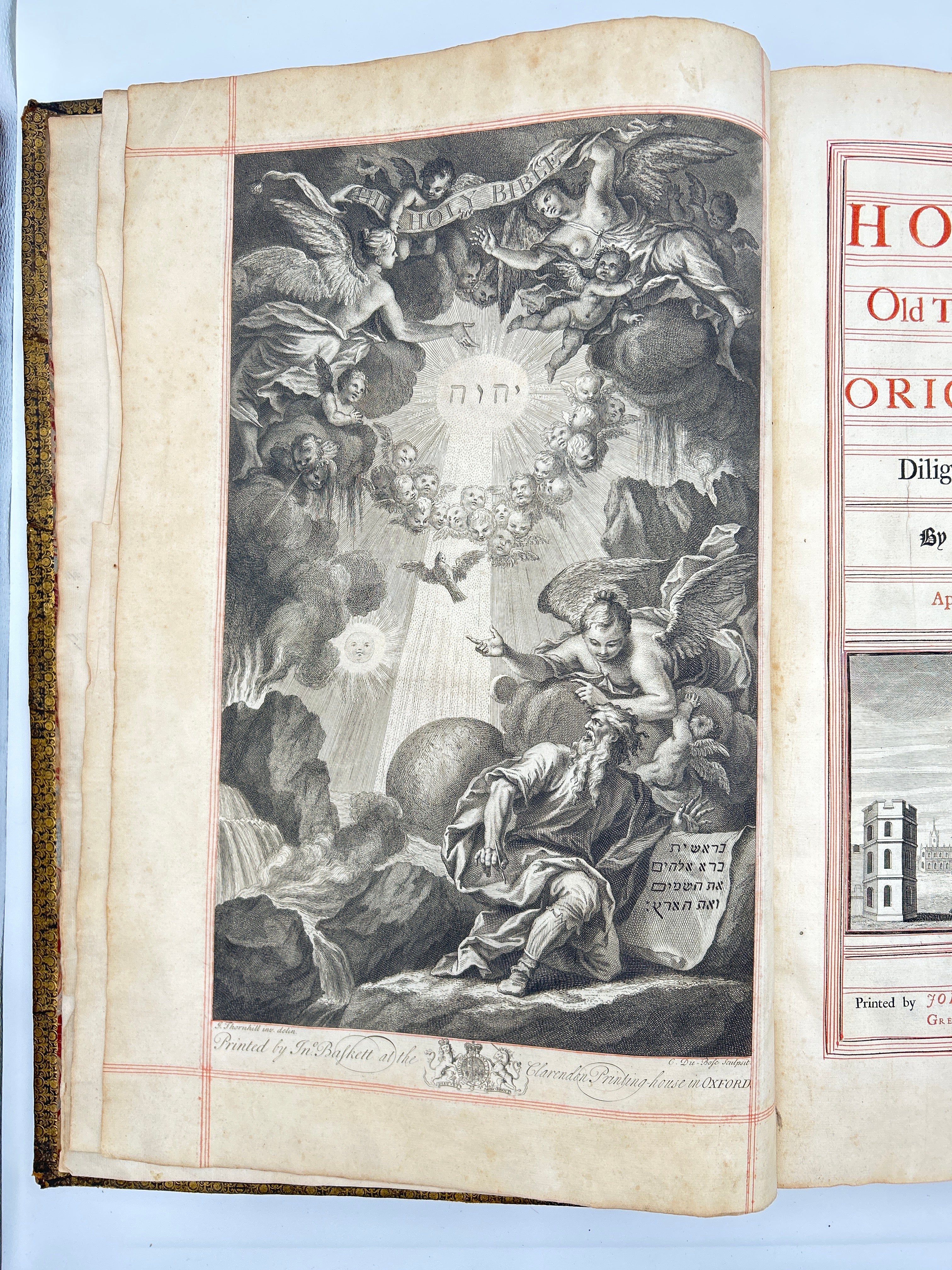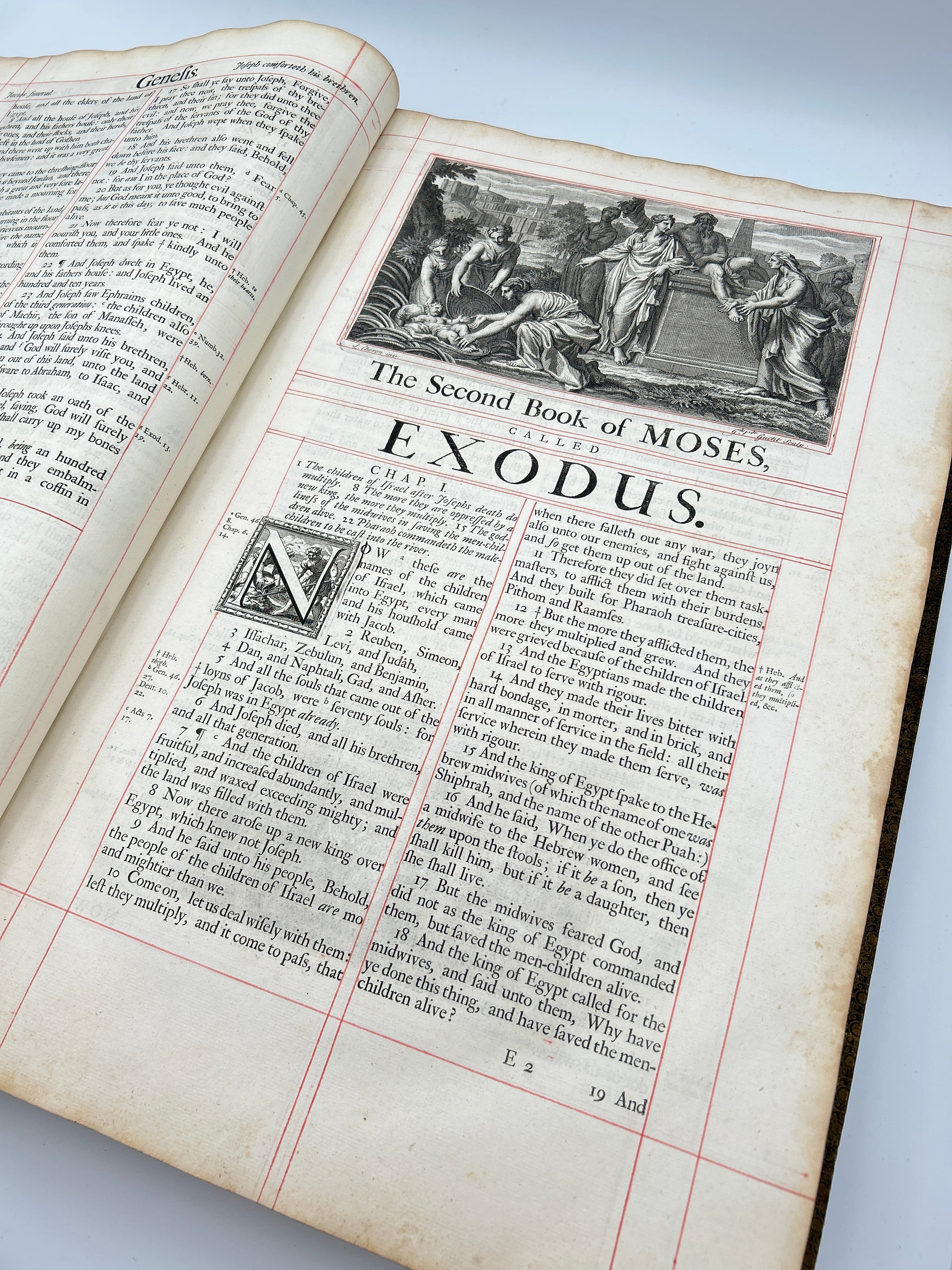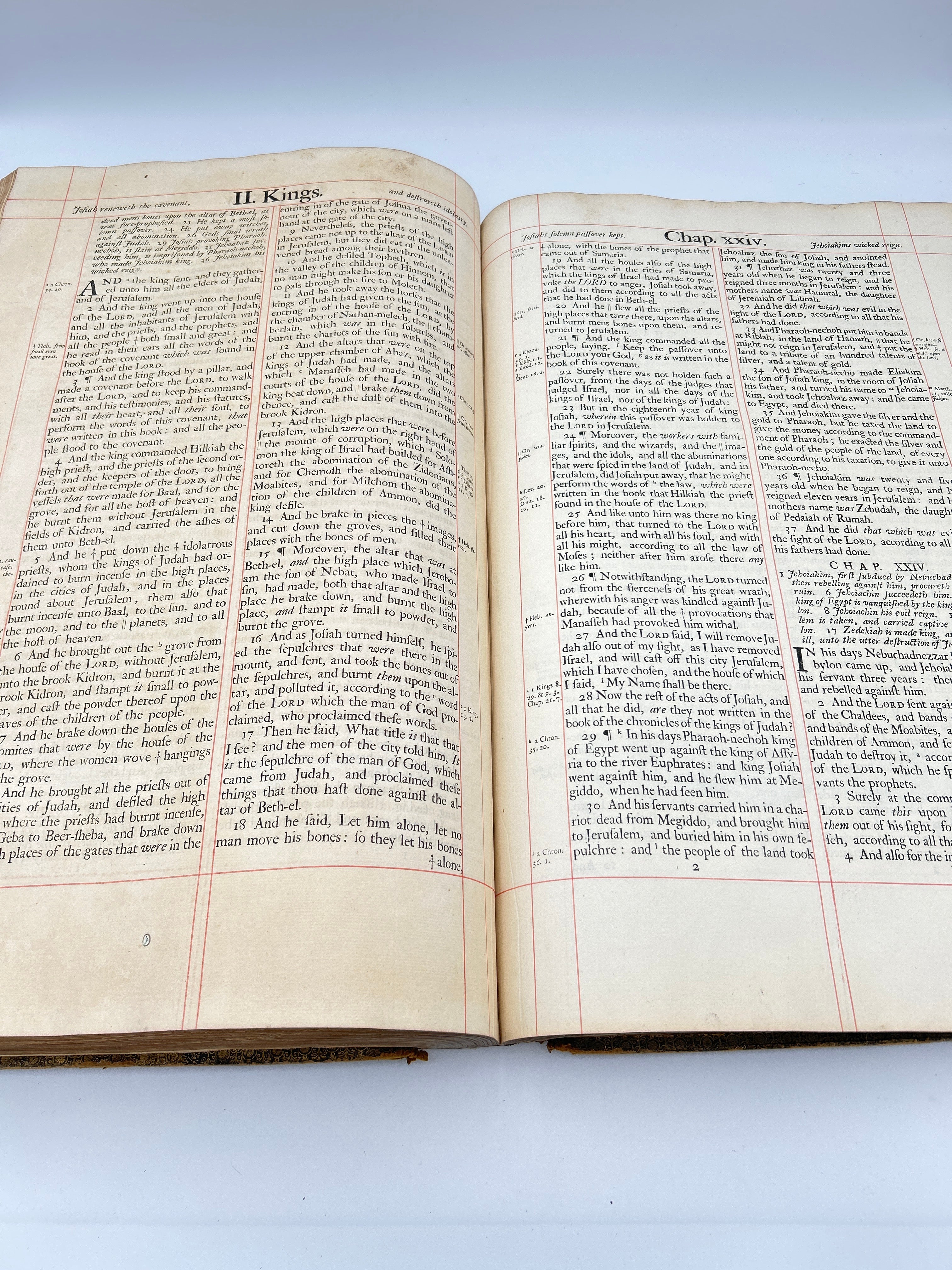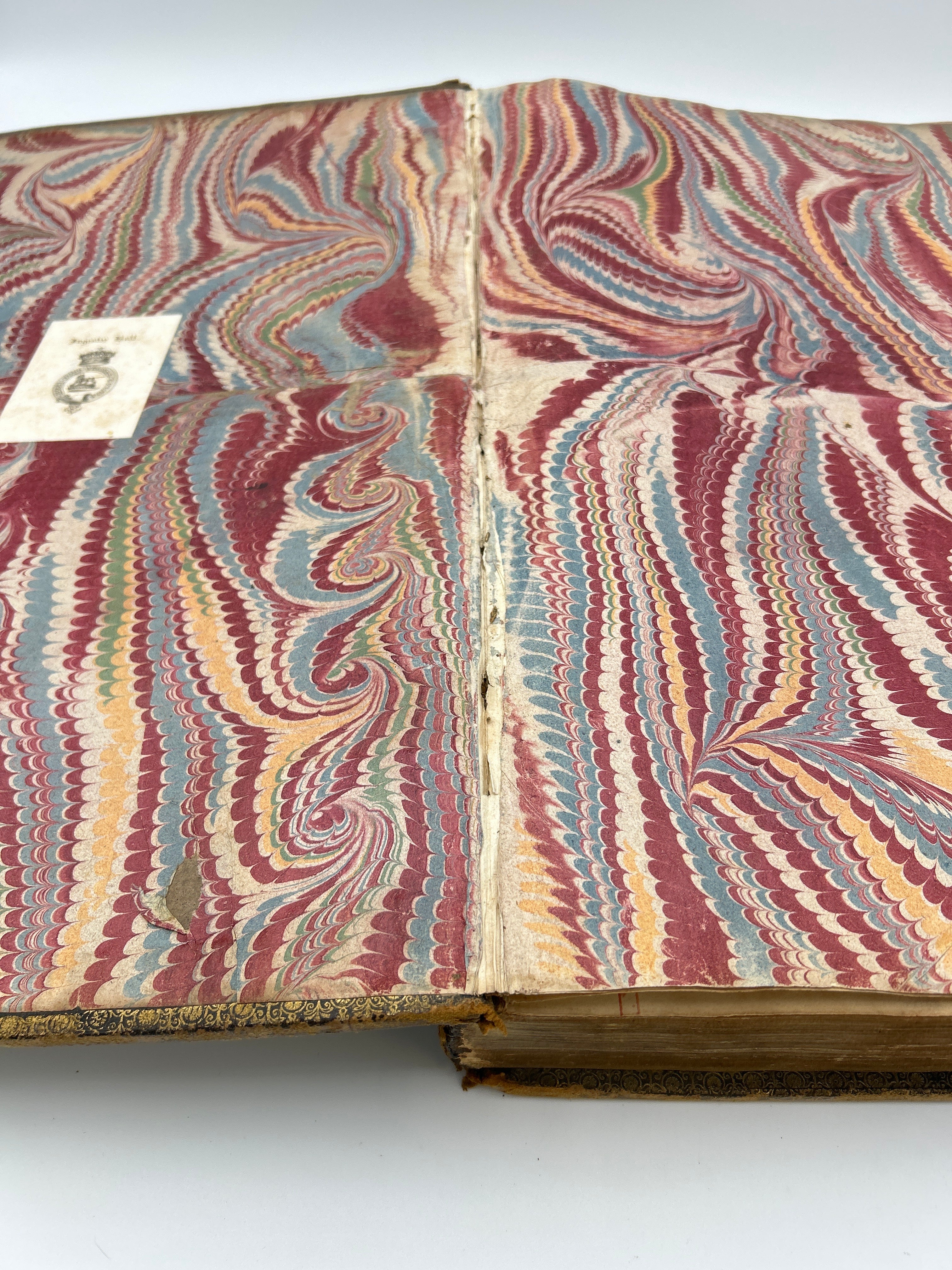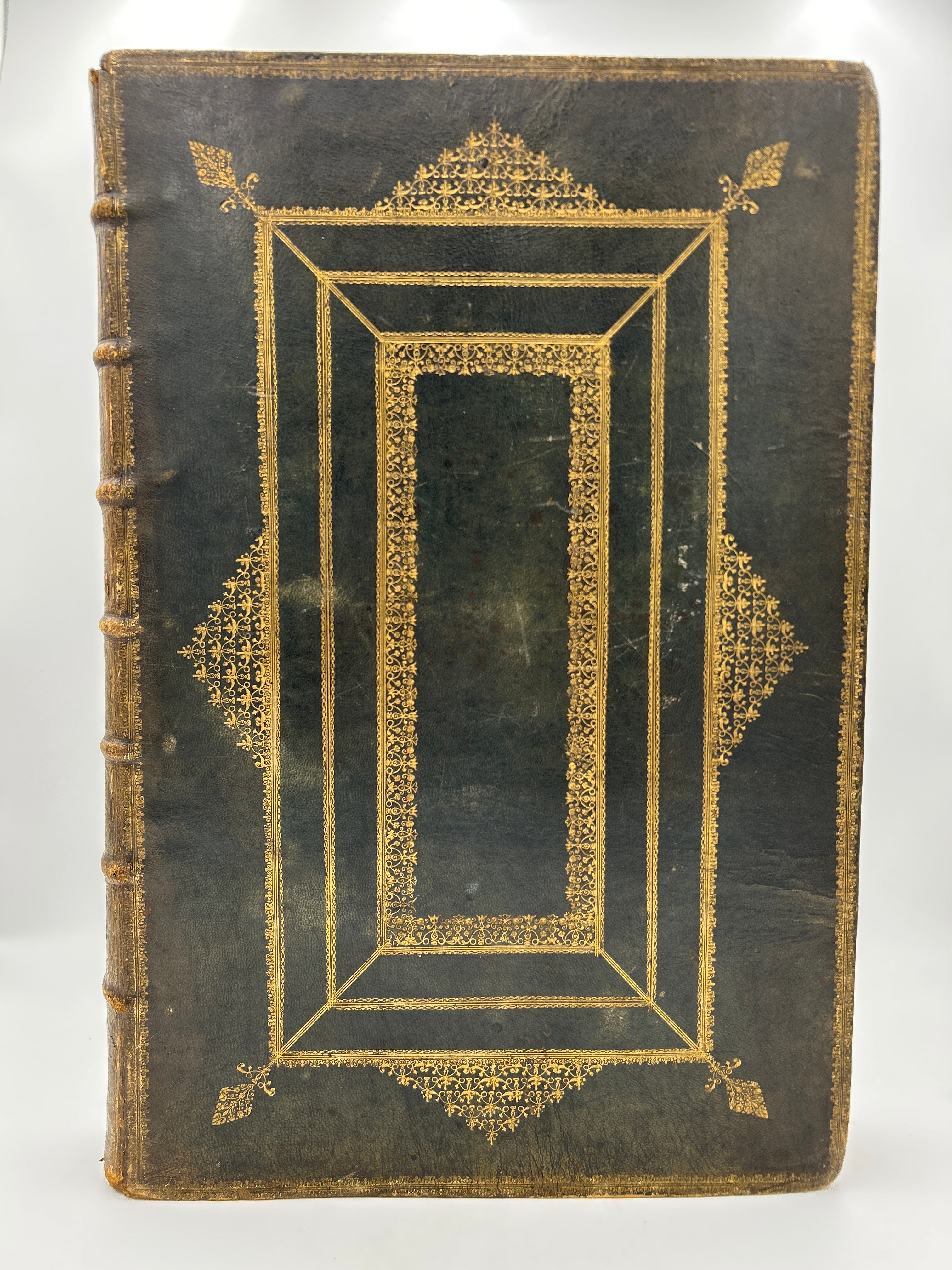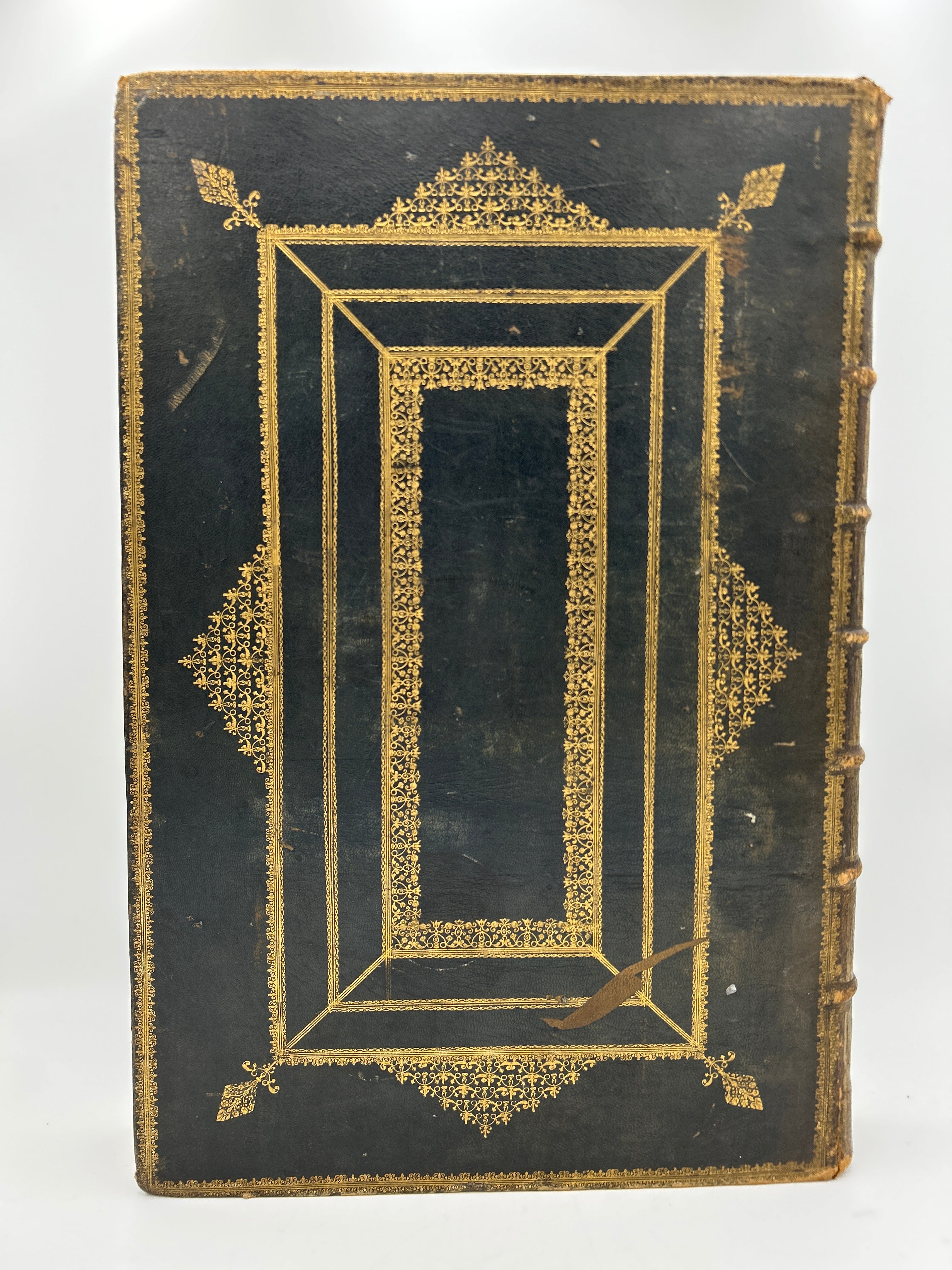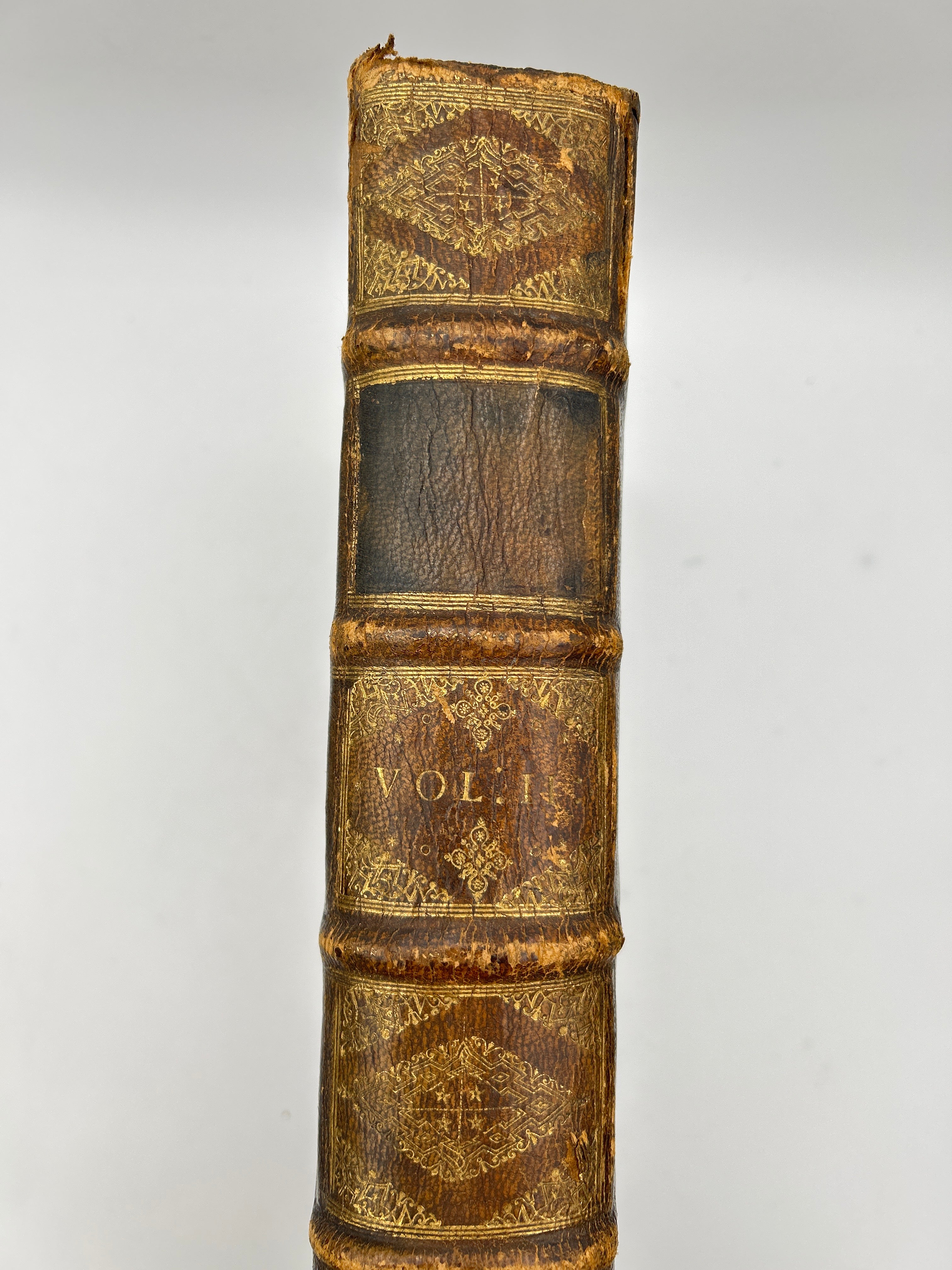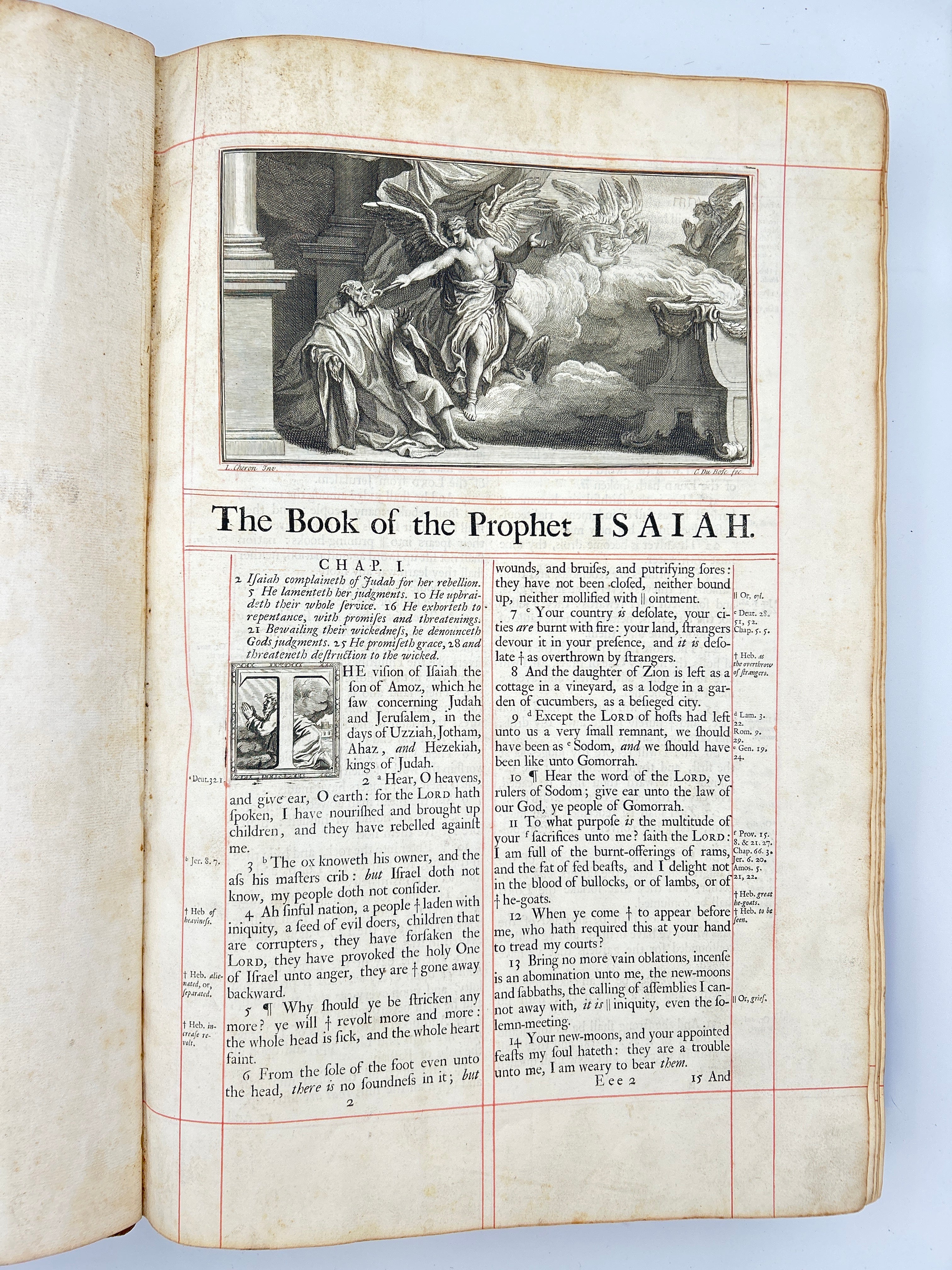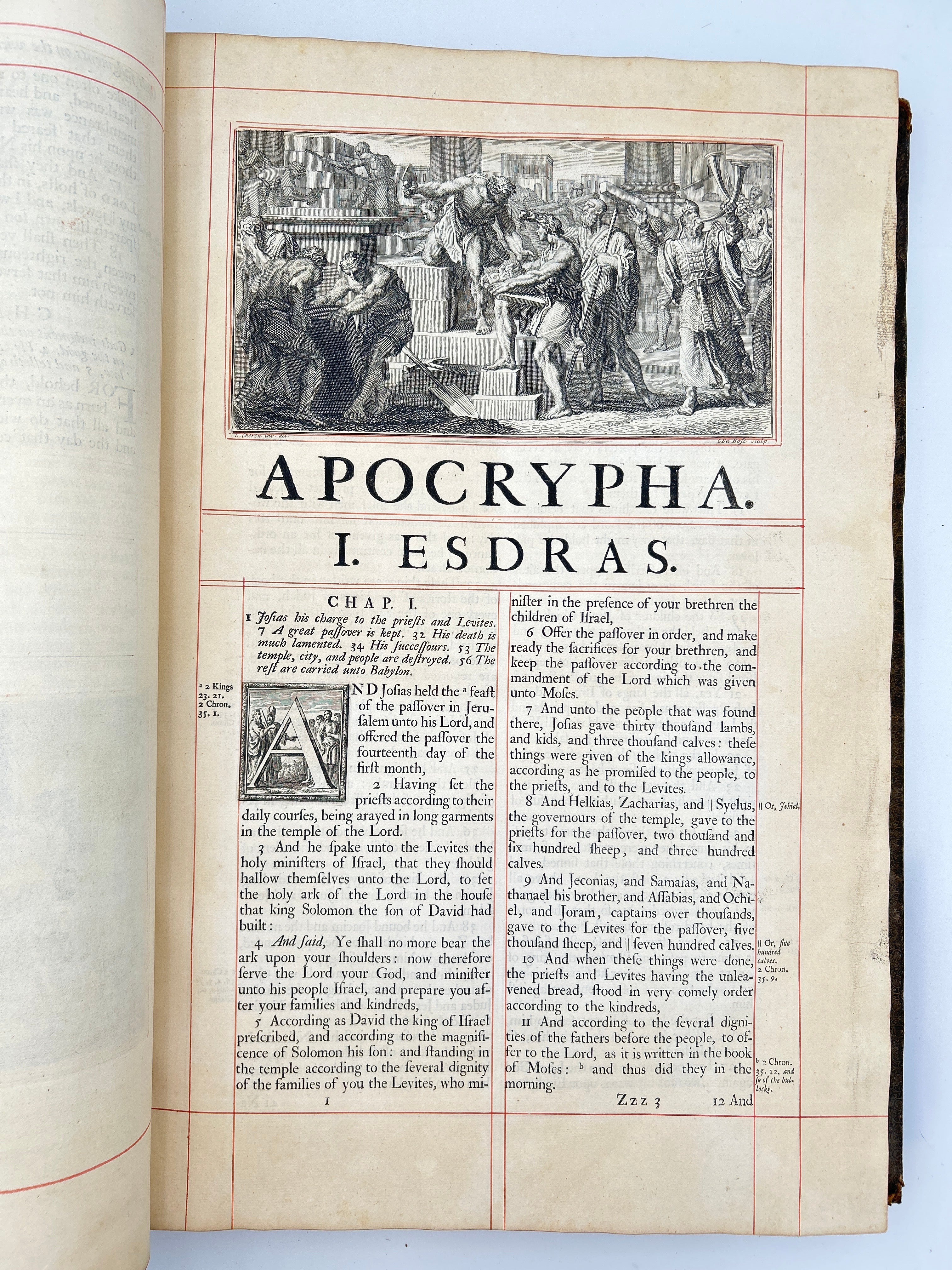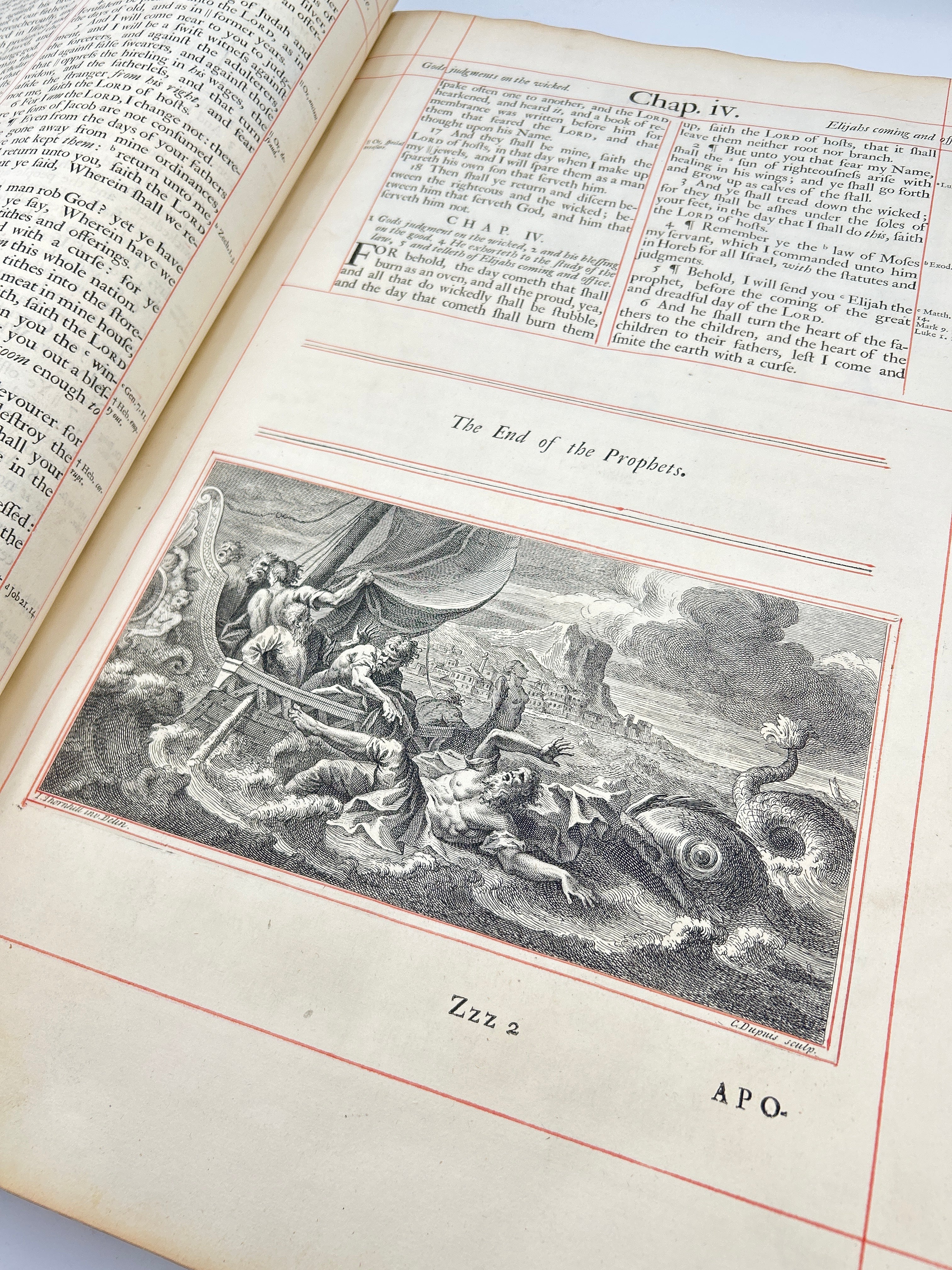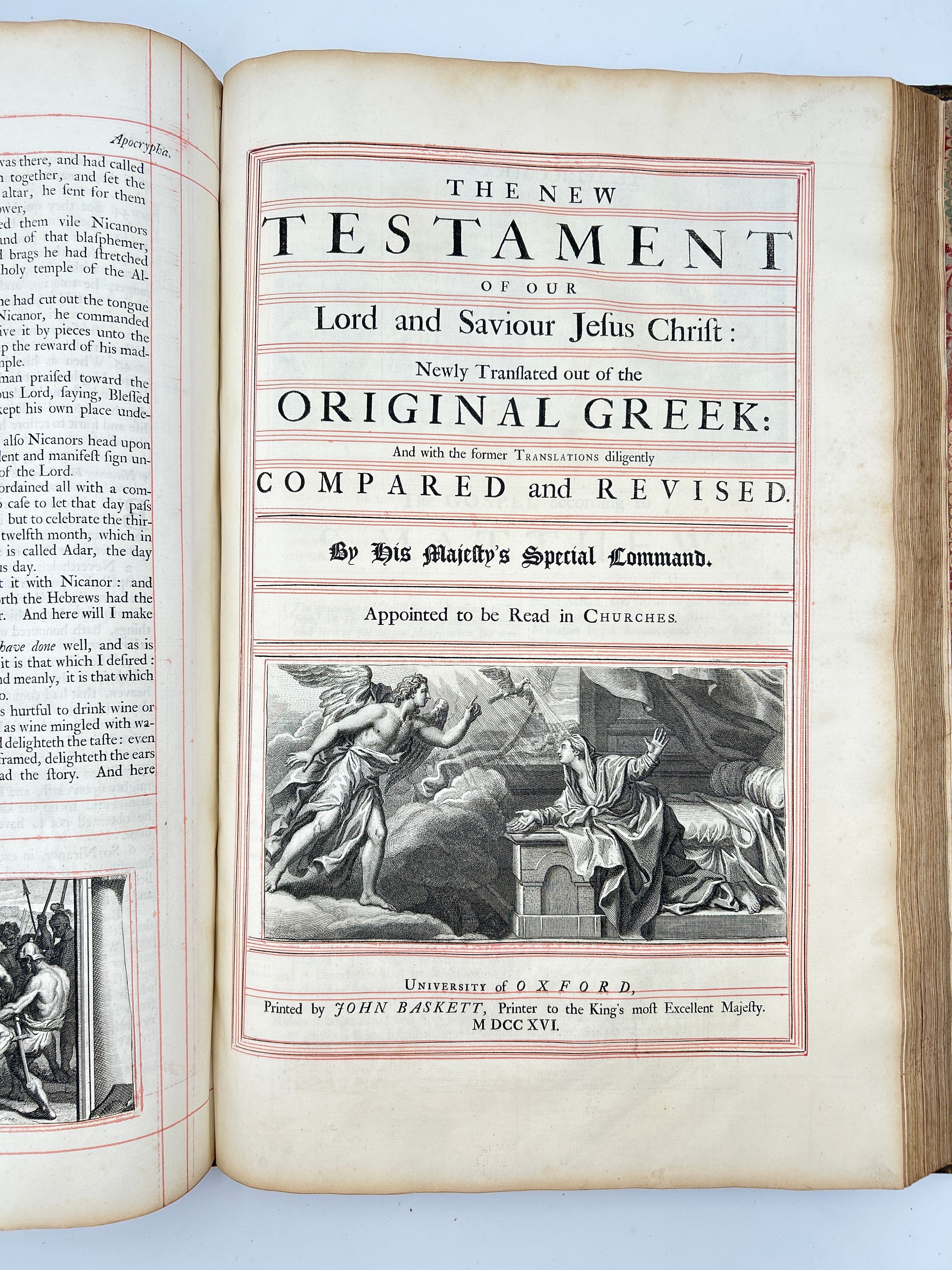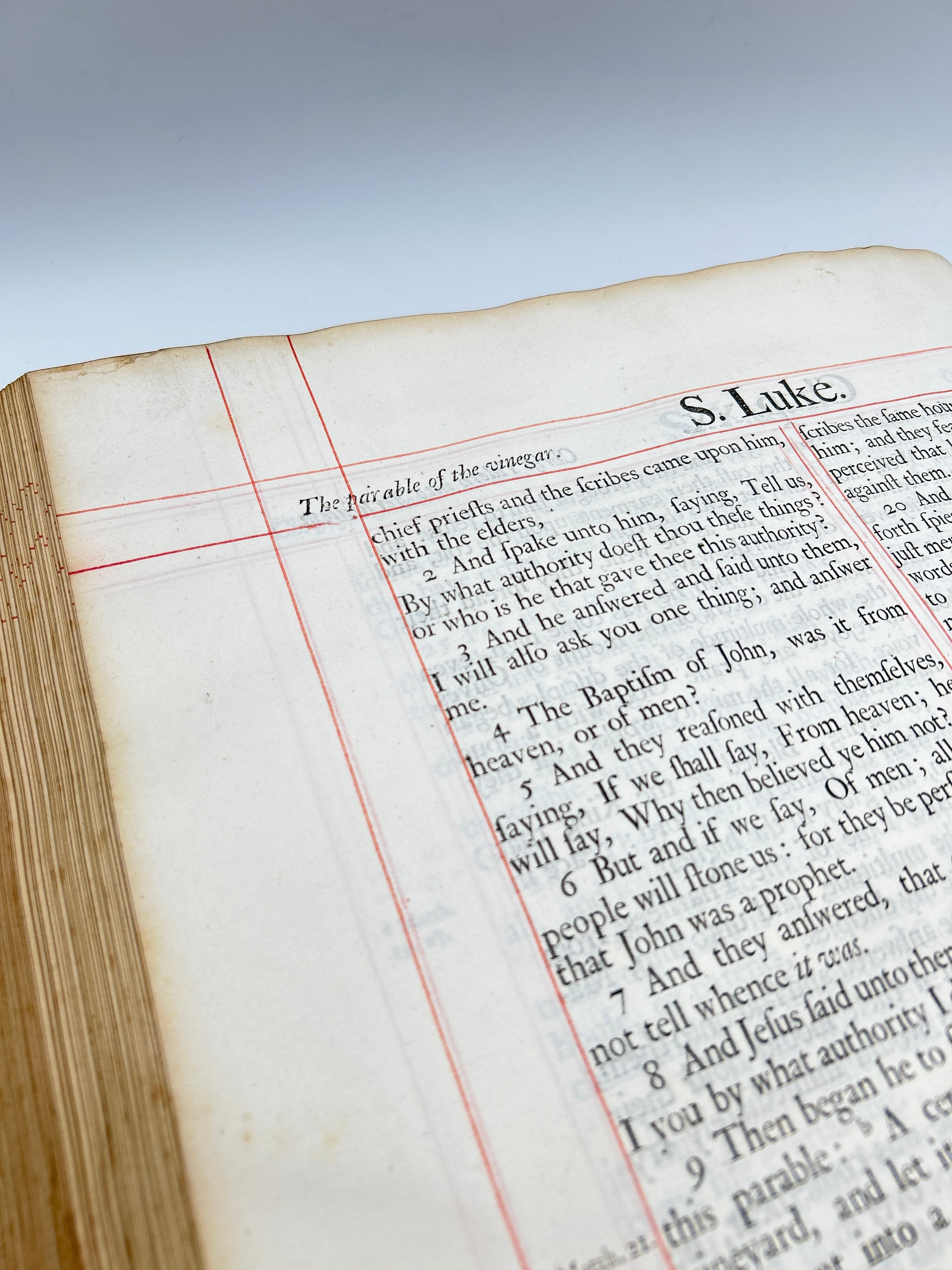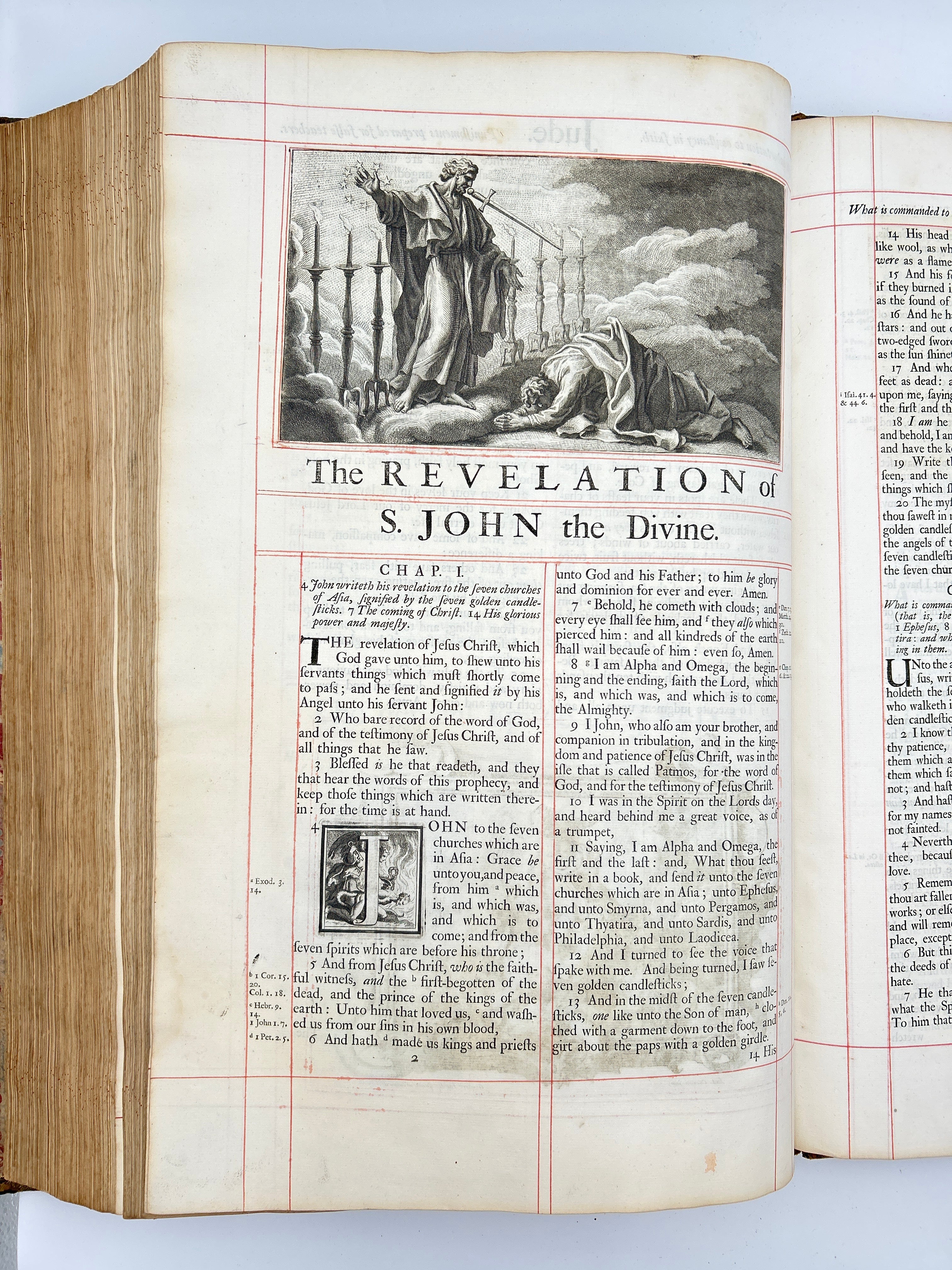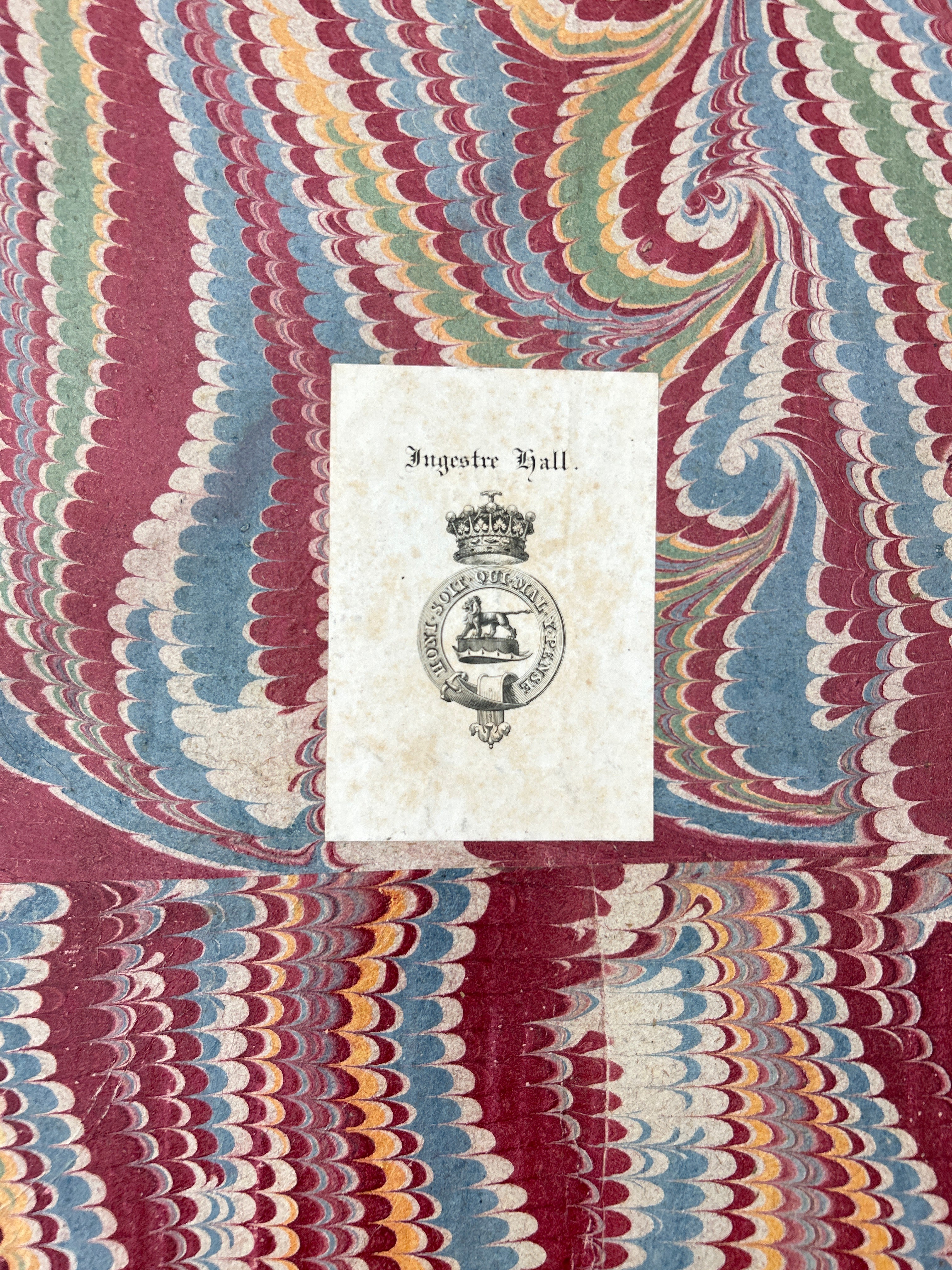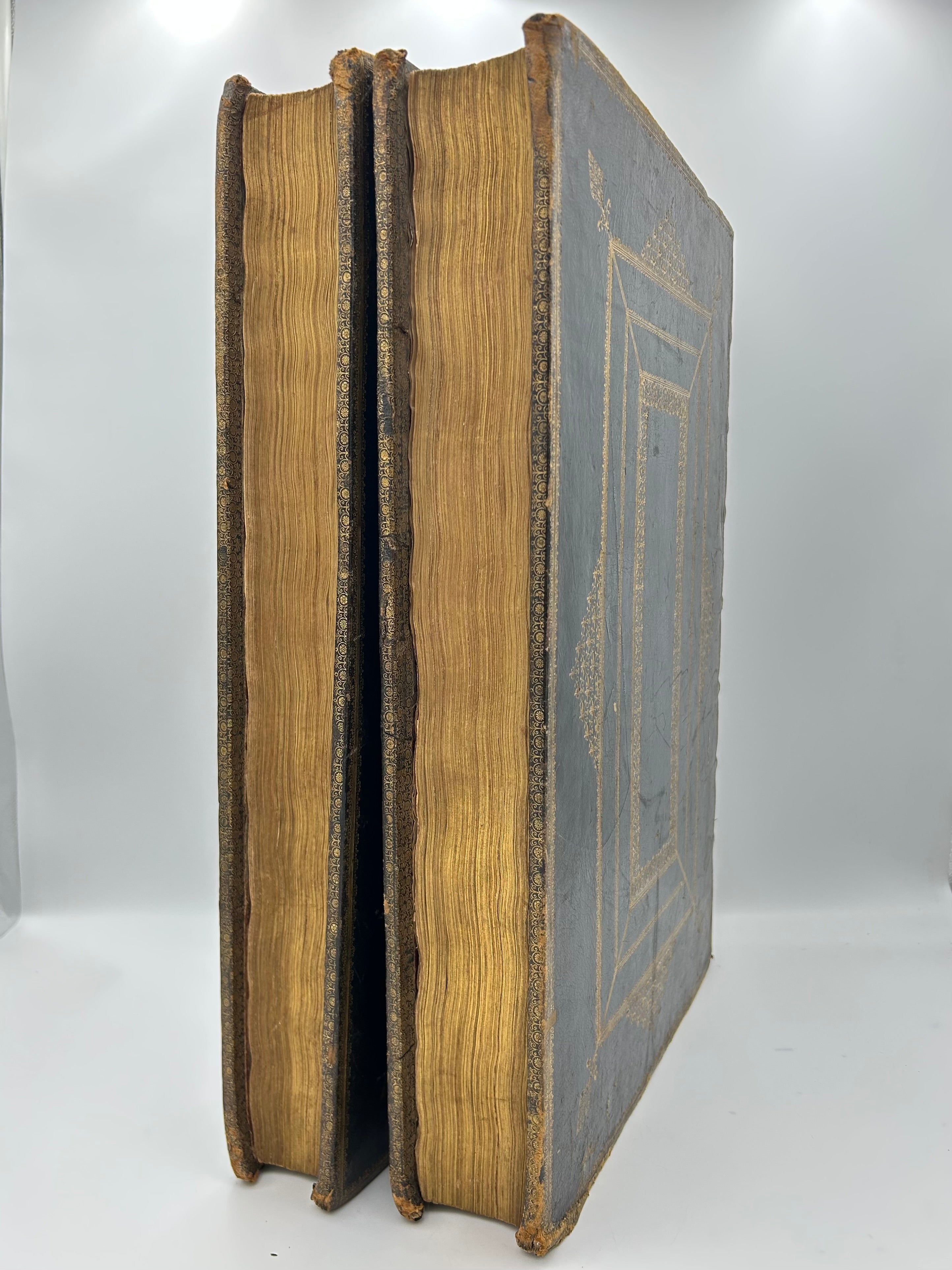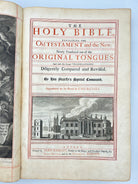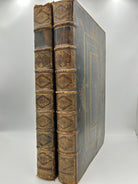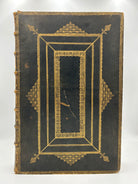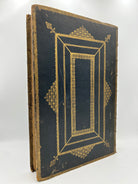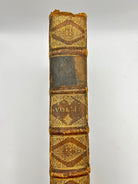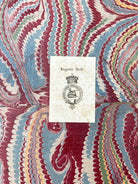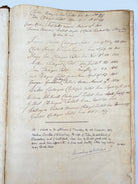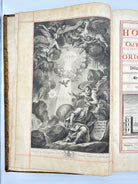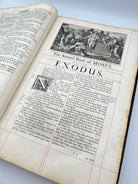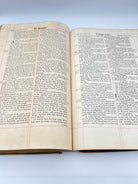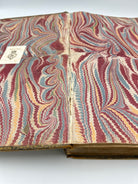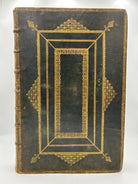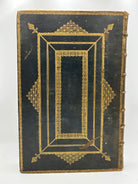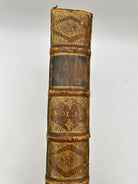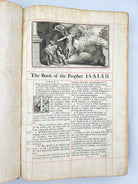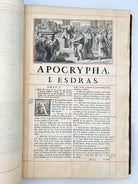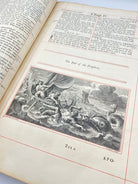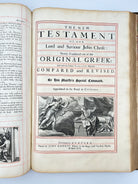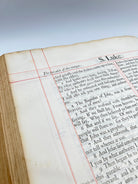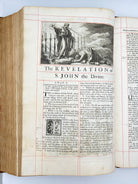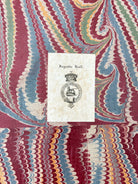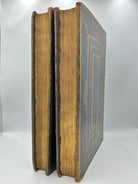The Holy Bible — “Vinegar” Bible
Couldn't load pickup availability
5B The Holy Bible with Old and New Testaments. Oxford: John Baskett, 1717. “Vinegar” Bible. Each 22’x14.5’x3’
Notes
The history of Bible printing began in earnest with Johannes Gutenberg’s invention of the movable-type printing press around 1440 in Mainz, Germany. By 1455, Gutenberg had printed the Gutenberg Bible, also known as the 42-line Bible, which was the first major book printed using this revolutionary technology. This marked a turning point not only for the Bible but for global literacy and the spread of ideas. Before this, Bibles were painstakingly copied by hand, usually by monks, making them rare, expensive, and inaccessible to the general public. The printing press allowed for mass production, significantly lowering costs and enabling the Bible to reach a wider audience.
In the centuries that followed, the Bible became the most printed and distributed book in the world. Key translations such as Martin Luther’s German Bible (1522–1534) and the English-language King James Version (1611) were instrumental in shaping national languages and literatures. The printing of the Bible was closely tied to religious movements such as the Protestant Reformation, which emphasized personal access to Scripture. As printing technologies evolved—moving from hand-press to mechanized presses and eventually to digital formats—the Bible’s availability expanded across the globe in thousands of languages, making it one of the most influential texts in human history.
John Baskett was a notable English printer who served as the King’s Printer from 1711 until his death in 1742. This prestigious role granted him the exclusive right to print Bibles, prayer books, and other official religious texts in England. Baskett operated out of Oxford and London, overseeing one of the most expansive and technologically advanced printing operations of the time. His tenure was marked by an ambition to elevate the quality and grandeur of printed Bibles, particularly through the use of large folio formats, fine paper, and elegant type design.
One of Baskett’s most famous productions was the 1717 folio edition of the King James Bible, now often referred to as the "Vinegar Bible." This nickname comes from a prominent printing error in the heading of Luke 20, which reads “The Parable of the Vinegar” instead of “The Parable of the Vineyard.” Other mistakes in the “Vinegar Bible” includes repeated words, omitted phrases, and incorrect chapter headings or numbering, all of which reflect the challenges of typesetting such a massive text by hand.
This was intended to be a luxurious and prestigious edition but ironically, the very errors that marred its reputation have made surviving copies highly valuable today. Despite the ridicule the Vinegar Bible received, it remains a testament to Baskett’s ambitions to create a monumental English Bible, blending religious authority with the era’s most advanced printing techniques.
This Bible bears the crest of Ingestre Hall, the estate of the Chetwynd-Talbot family, a distinguished lineage in Staffordshire, England. The family held the titles of Earls Talbot and later Earls of Shrewsbury, making them one of the most prominent aristocratic houses in Britain. Their ancestry blends two significant noble lines: the Chetwynds, who were influential parliamentarians and antiquarians in the 17th century, and the Talbots, one of England’s oldest noble families, with deep ties to the Church of England and national politics. A preliminary blank page has family names and dates noted in Volume One.
Ingestre Hall was not only a grand country estate but also included St. Mary’s Church, Ingestre, a private chapel commissioned by Sir Walter Chetwynd in the late 17th century. The presence of this 1717 Vinegar Bible—a luxurious folio edition printed by John Baskett—reflects the family’s wealth, status, and religious devotion. The inclusion of their crest not only affirms provenance but also connects the Bible to a storied heritage rooted in Britain’s cultural and ecclesiastical history.
Description
Folio edition in full leather bindings. With hand tooled gilt designs both geometric and organic on upper and lower boards. Seven raised bands with gilt ornamentation. Black leather label in the second compartment and lettering in the third. Gilt edges. Red hand drawn ruling throughout. Silver plate engravings throughout. Marbled endpapers. Very fine paper and materials used. Armorial bookplates of Ingestre Hall on the interior upper board of each volume. Numerous family names of the Chetwynd-Talbot line and dates of births and some deaths inscribed on preliminary blank page along with a lengthy inscription in black ink noting the birth of the twenty-second Earl of Shrewsbury on December 18th, 1952.
Fading to the gilt ornamentation on the spines and some scuffing to the boards. Small sections where the black leather has torn away on each board. Significant rubbing to the extremities and al points are bumped and now rounded. Fully intact with only some minor wear along the endpapers. Fine condition overall.
